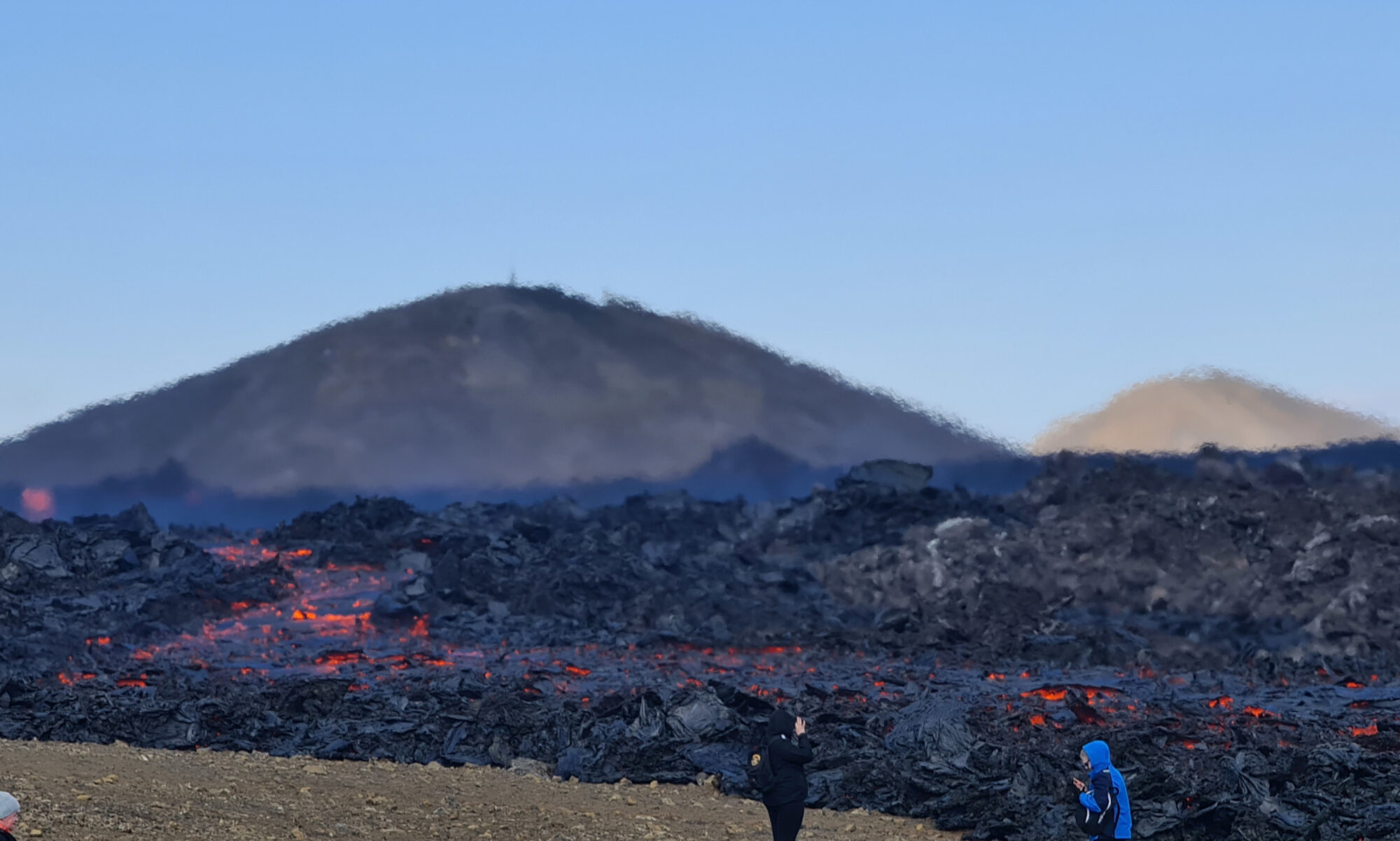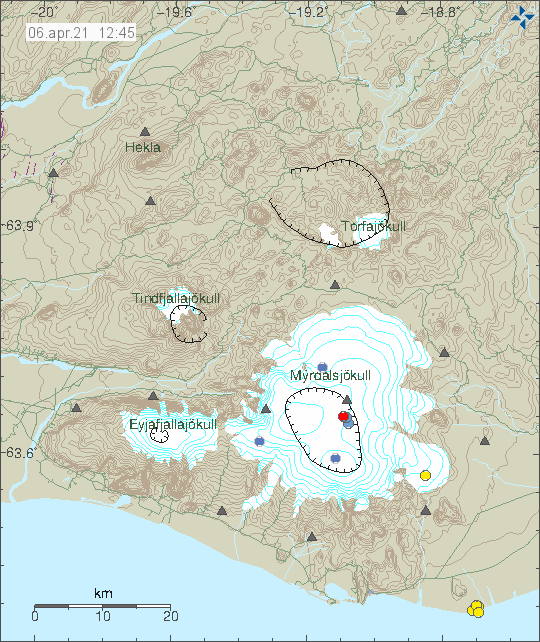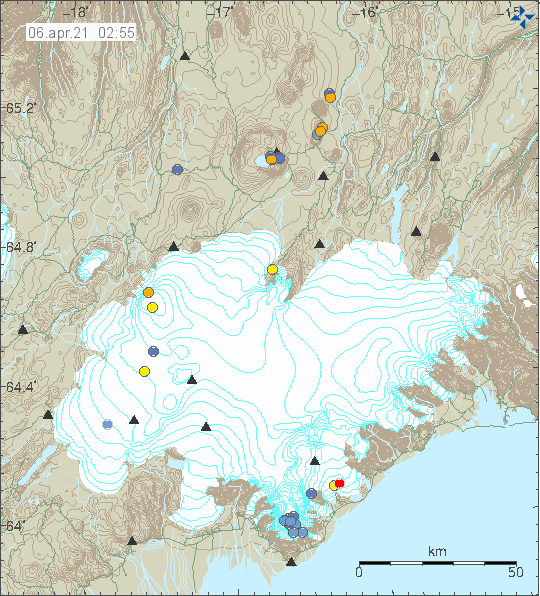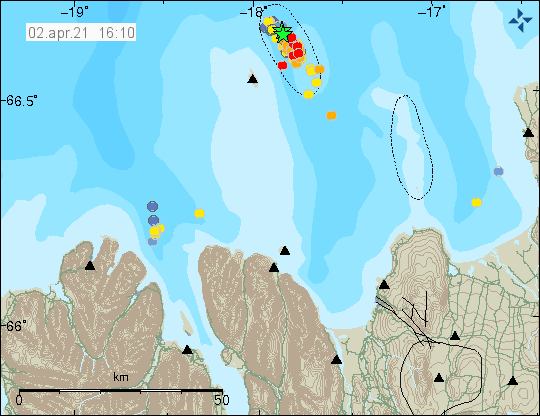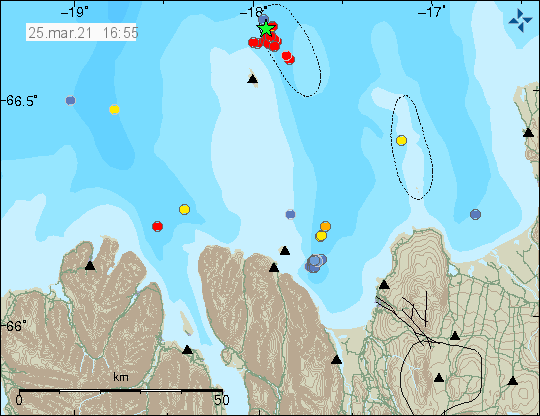This is a short article about the eruption in Fagradalsfjall mountain that is part of Krýsuvík-Trölladyngja volcano system.
This week has been busy and please read the older articles about what happened earlier in this week.
- Lava output is now 50% more according to University of Iceland measurements compared to start of the eruption (19-March-2021). Gas output is also more then in start of the eruption. It has resulted in problems depending on wind direction.
- There is a high risk that an eruption might start south of Geldingadalir valley eruption. There is also a high risk that new eruption is going to start north of the 5-April-2021 eruption.
- There is no change in inflation in the area. It has slowed down but remains the same.
- There continues to be low level earthquake activity along the dyke from Keili to Fagradalsfjall mountain.
Any change that is going to happen without warning and might not happen without any earthquake or little earthquake activity.
Next update is going to be on 16-April-2021 unless something major happens. This eruption is always changing and this weekend and next week might get interesting. If anything happens I am going to write new article soon as possible.
Update at 22:43 UTC
Icelandic Met Office released this map and press release (in Icelandic only) about the risk new fissures can open up both north and south the the current craters that are erupting. This page is updated regularly so if you are looking at this later than 9 to 10 April 2021 you might have to look for this information.
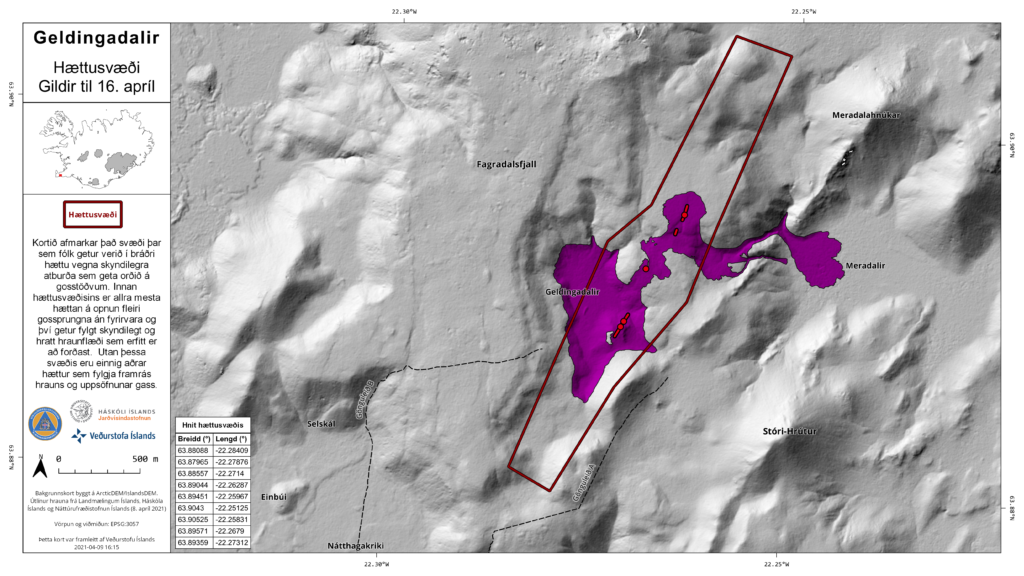
The map shows the area that is now at risk of new fissures opening up without warning.
Update 10-April-2021 at 15:20 UTC
Around 03:14 UTC on 10-April-2021 fissure number 4 did open up between fissure number 2 (5-April-2021) and fissure number 3. The eruption from this crater doesn’t seem to be large but it did happen under a new lava that had flowed over that same area few days before from fissure 2. In fissure/crater 1 the amount of erupting lava did drop a little just before the new eruption.
I am noticing that it seems new fissures are opening up more frequently then before. This seems to have changed after opening up of fissure 3.
Timeline of fissure openings so far.
1st fissure 19-March-2021
2nd fissure opened 5-April-2021
3rd fissure opened 7-April-2021
4th fissure opened 10-April-2021
Time period between new fissures opening up currently seems to be 3 to 4 days. I suspect that this is going to change soon and it is possible that new fissure that opens up might get larger as the eruption goes on. There seems to be phase in this eruption that is happening in Fagradalsfjall mountain. I am not perfectly sure what that phase is now since I’ve never seen this before and I don’t have any data on this type of eruption behaviour from other volcanoes outside of Iceland. That I know of.
Video of the eruption fissure 4 opening up.
Náttúran er óútreiknanleg og ófyrirsjáanleg (mbl.is)
Article updated at 22:48 UTC.
Article updated at 15:39 UTC on 10-April-2021.
Article updated at 15:54 UTC on 10-April-2021.
